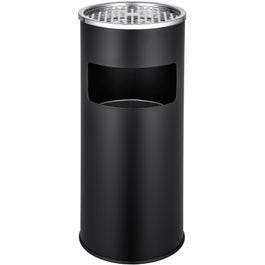Properly sorted, separated and disposed of; waste bins that help protect the environment
Available in a range of colours, rubbish bins that help you sort your waste and have a positive effect on the environment. Ideally, your household should have five different bins: a kitchen bin for compostable waste, a glass bin, one for paper and card, one bin for plastic and packaging and a bin for landfill waste.
Automatic sensor bins are especially practical: thanks to their integrated sensors, they open and close automatically, hands free, ensuring a hygienic home.
Our tip: if you can’t hide your bins under the sink, in the garage or in the cellar, you should opt for an attractive designer piece that’s guaranteed to add a finishing touch to your kitchen – preferably a sealed bin such as a modern sensor bin, which also keep your hands clean!

